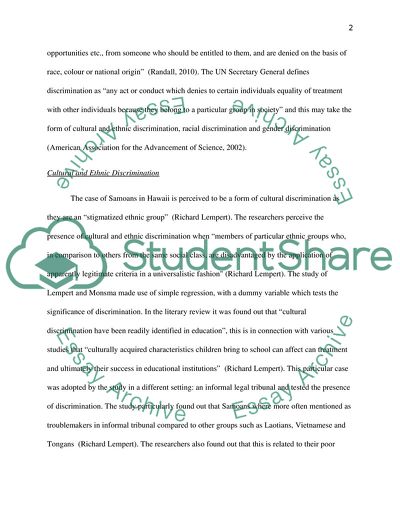Cite this document
(Cultural and Ethnic Discrimination Case Study Example | Topics and Well Written Essays - 2000 words, n.d.)
Cultural and Ethnic Discrimination Case Study Example | Topics and Well Written Essays - 2000 words. Retrieved from https://studentshare.org/social-science/1737202-critical-theoretical-analysis
Cultural and Ethnic Discrimination Case Study Example | Topics and Well Written Essays - 2000 words. Retrieved from https://studentshare.org/social-science/1737202-critical-theoretical-analysis
(Cultural and Ethnic Discrimination Case Study Example | Topics and Well Written Essays - 2000 Words)
Cultural and Ethnic Discrimination Case Study Example | Topics and Well Written Essays - 2000 Words. https://studentshare.org/social-science/1737202-critical-theoretical-analysis.
Cultural and Ethnic Discrimination Case Study Example | Topics and Well Written Essays - 2000 Words. https://studentshare.org/social-science/1737202-critical-theoretical-analysis.
“Cultural and Ethnic Discrimination Case Study Example | Topics and Well Written Essays - 2000 Words”. https://studentshare.org/social-science/1737202-critical-theoretical-analysis.


